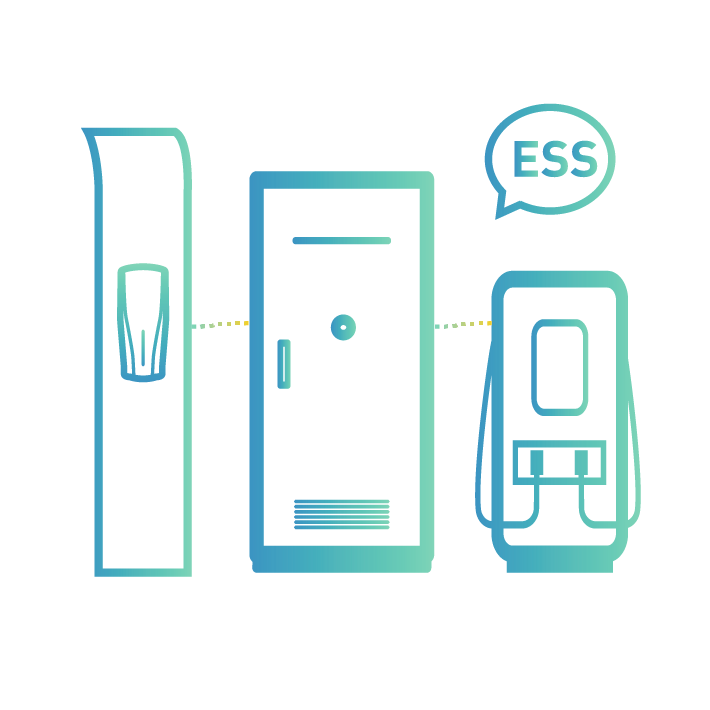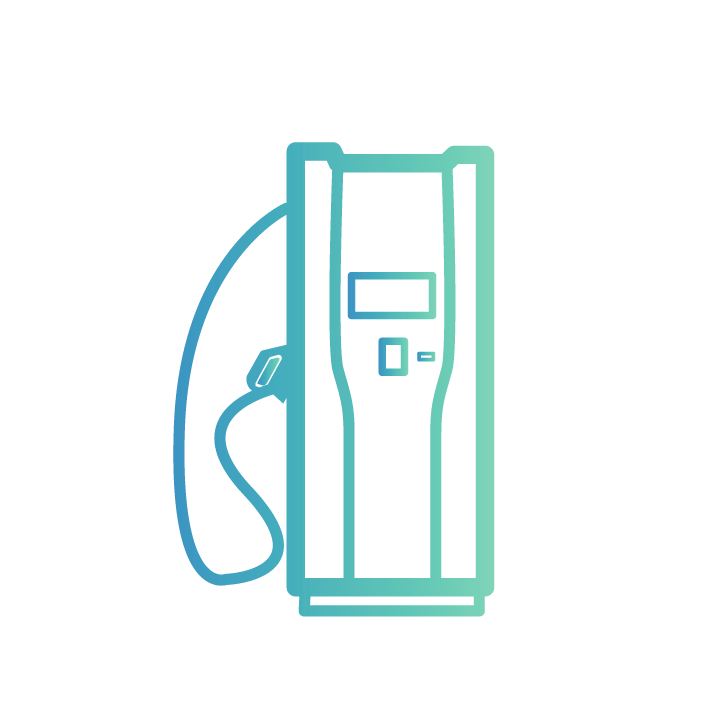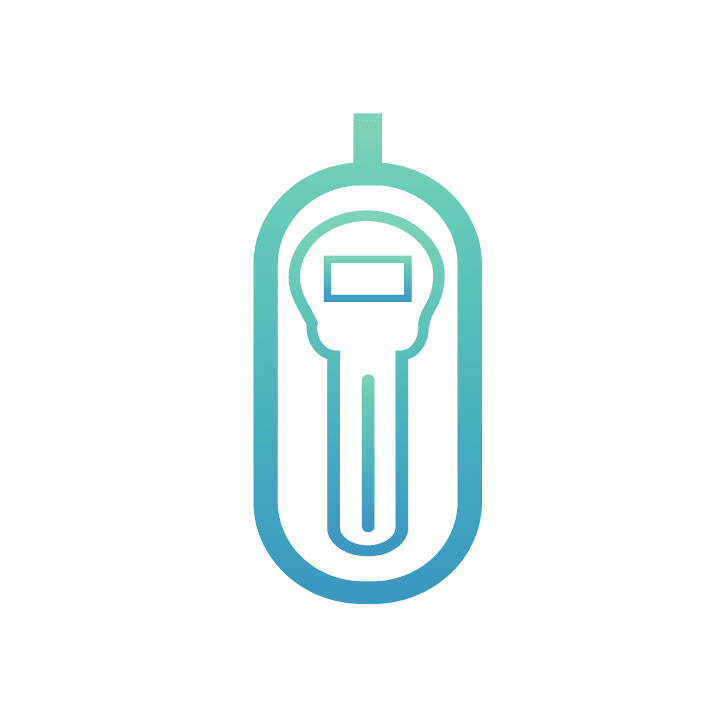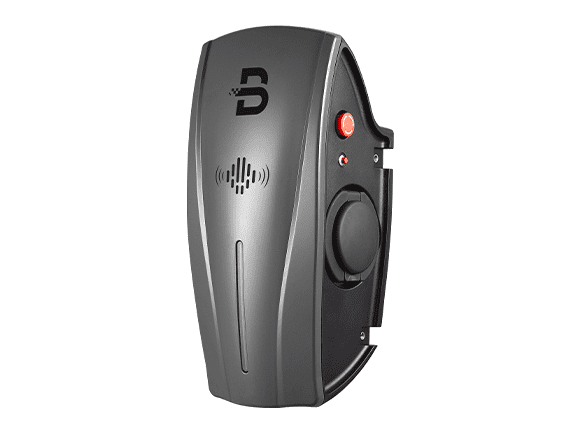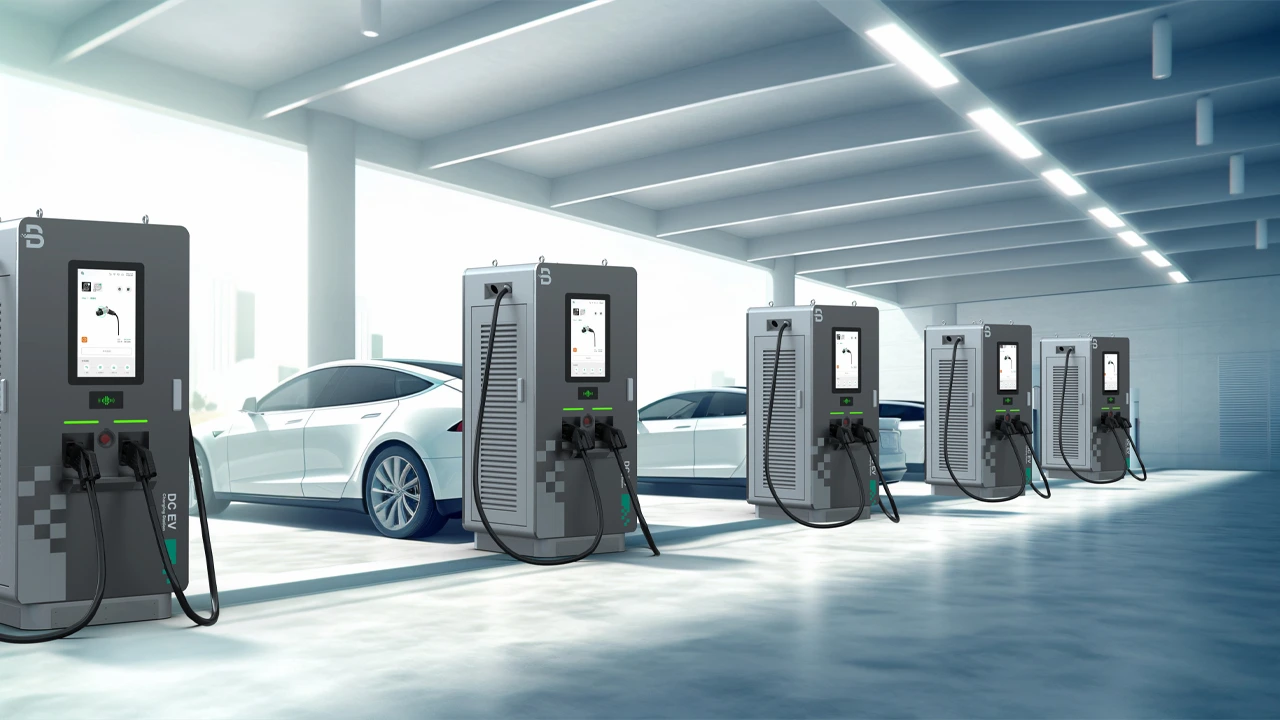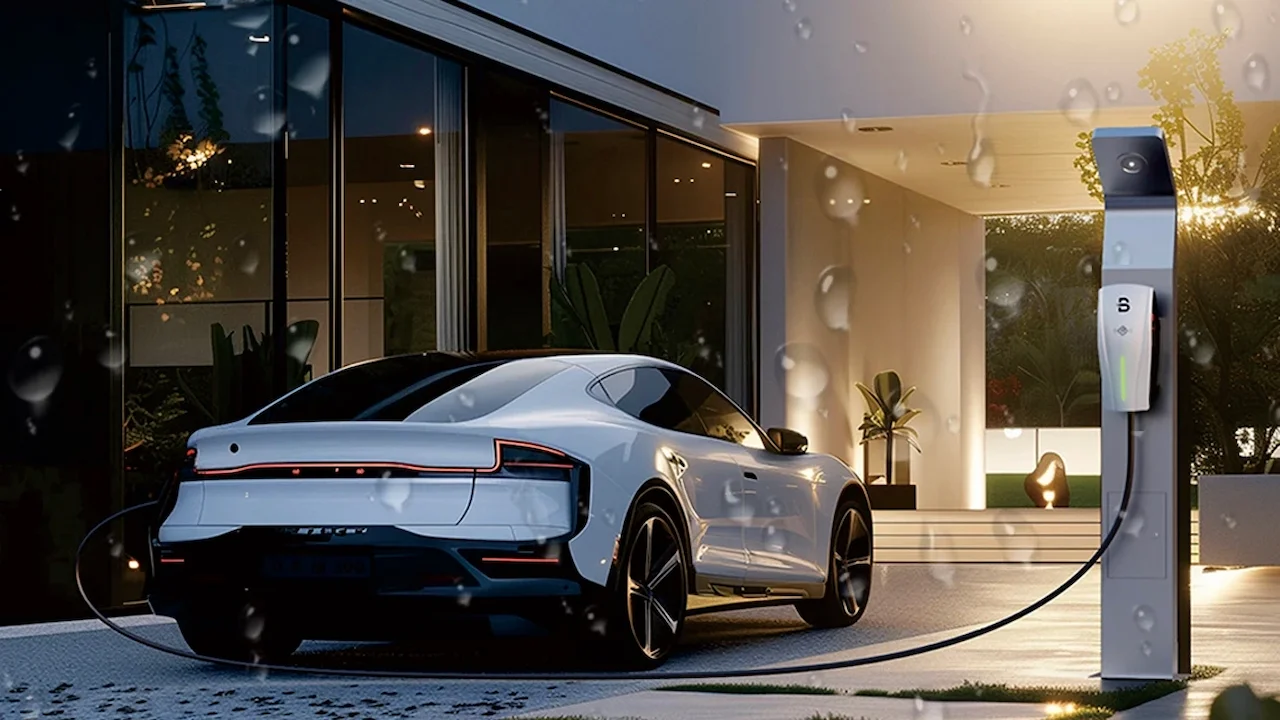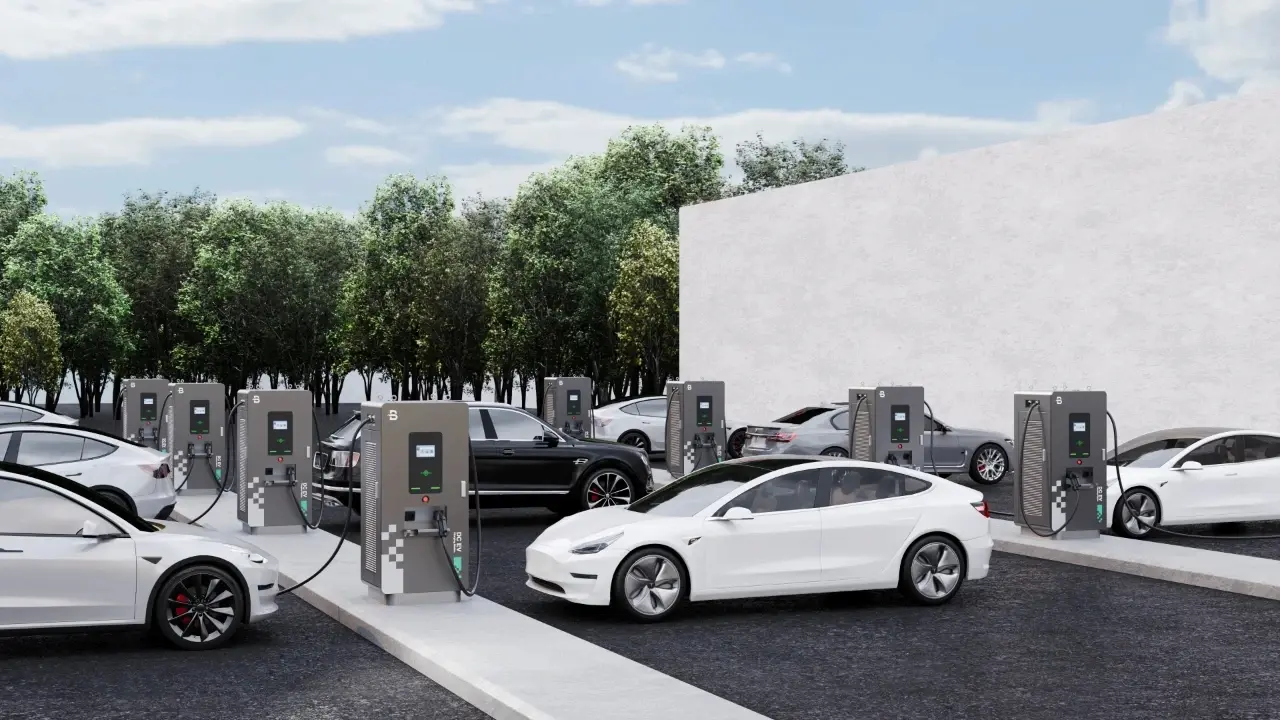When purchasing devices such as mobile phones, watches, computers, lamps, and solar panels, have you noticed the IP & IK ratings listed on their product details pages?
For equipment frequently exposed to outdoor environments, facing challenges like rain, windblown sand, dust, or even accidental impacts, its protective capabilities are directly related to its lifespan and user safety. IP & IK ratings are international standards used to evaluate a device’s resistance to solid/liquid ingress and mechanical impacts, respectively.
In the electric vehicle charging station industry, this is also a necessary consideration before investment. This article will delve into the specific meanings of IP & IK ratings to help you make an informed choice when selecting charging stations.- What Does IP Rating Mean?
- What Does IK Mean?
- How to Choose Between CCS1 and CCS2?
- Cooperate with EVB Charger
- Common Misconceptions That Need to Avoid
What Does IP Rating Mean?
The IP (Ingress Protection) rating is defined by the International Electrotechnical Commission (IEC) 60529 standard to evaluate the ability of an electrical enclosure to protect against solid objects and liquids. [1]
The IP code typically consists of “IP” followed by two digits, which represent the dustproof and waterproof ratings, respectively.
1. Analysis of the numbers
The Ingress Protection rating consists of two digits:
- First digit (0-6): Solid object protection (such as dust, sand, and stones)
- Second digit (0-9): Liquid protection (such as rainwater, water spray, soaking)
The larger the digit, the better the IP degree of protection effect.
|
First digit |
Protection |
Second digit |
Protection |
|
0 |
No protection |
0 |
No protection |
|
1 |
Objects≥50mm |
1 |
Dripping water |
|
2 |
Objects≥12.5mm |
2 |
Dripping water when tilted at 15° |
|
3 |
Objects≥2.5mm |
3 |
Spraying water |
|
4 |
Objects≥1mm |
4 |
Splashing of water |
|
5 |
Dust Protected |
5 |
Water jets |
|
6 |
Dust-tight |
6 |
Powerful water jets |
|
– |
|
7 |
Immersion, up to 1 meter depth |
|
– |
|
8 |
Immersion, 1 meter or more depth |
|
– |
|
9 |
Powerful high-temperature water jets |
Note: Sometimes, you may see a device labeled with two ratings, such as “IP55/IP57.” This is because water ingress ratings beyond IPX6 are not cumulative. A device meeting the IPX7 standard does not necessarily comply with IPX5 or IPX6. The slash indicates that the device has passed both tests independently.
2. Common IP ratings
- IP54 rating: It means the amount of dust ingress is insufficient to affect the equipment’s operation, and water splashed from any direction will not cause harmful effects. Commonly used for indoor charging stations, such as those in underground parking lots.
- IP65 rating: It refers to complete dust protection and resistance to low-pressure water jets. Suitable for outdoor charging stations.
- IP66 rating: Provides full dust protection and resistance to powerful water jets, making it suitable for environments like coastal areas and regions with heavy rainfall.
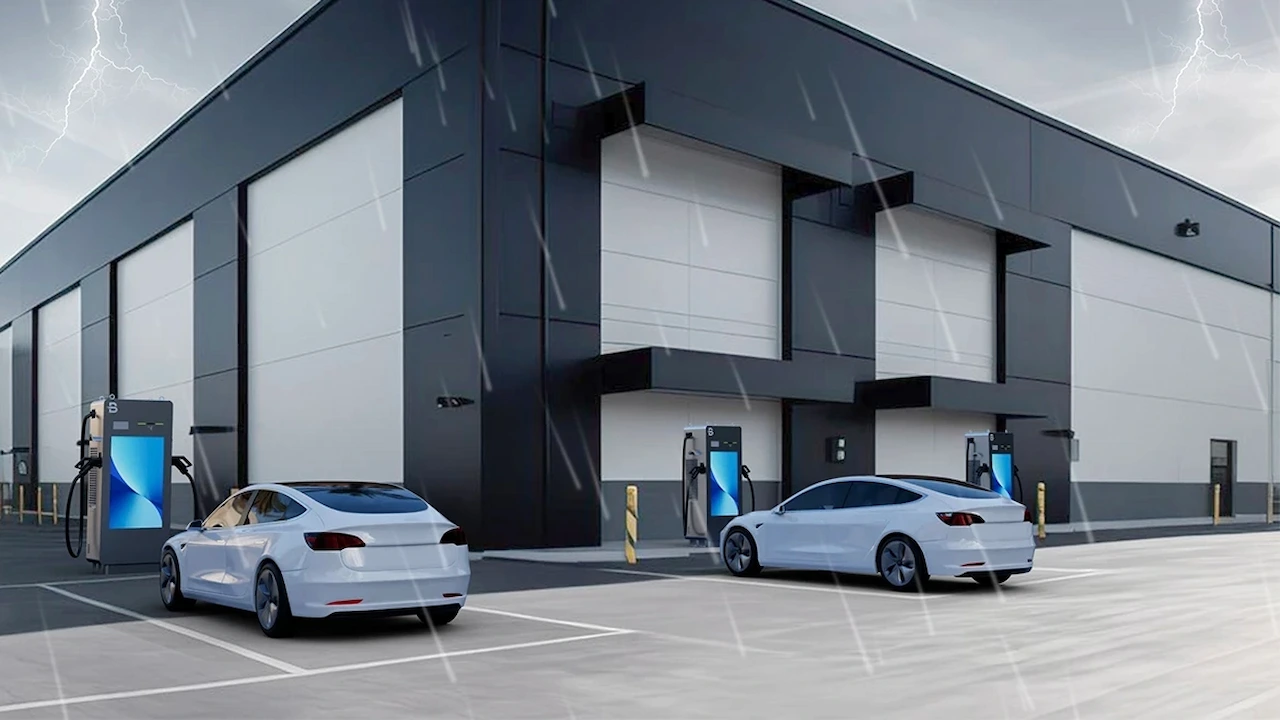
What Does IK Mean?
The IK (Impact Protection) rating is defined by the International Electrotechnical Commission 62262 standard to evaluate the resistance of electrical enclosures against mechanical impacts (such as blows, knocks, or collisions). The IK rating is typically denoted by “IK”, followed by a two-digit number.
1. Analysis of the numbers
The range of IK ratings is from IK00 (unprotected) to IK10 (highest protection), where a higher number indicates greater impact resistance. Different ratings correspond to different impact energies. [2]
|
IK rating |
Impact Energy |
Examples |
|
IK00 |
No protection |
– |
|
IK01 |
0.14 J |
Light touch |
|
IK02 |
0.2 J |
Finger tap |
|
IK03 |
0.35 J |
Tool drop |
|
IK04 |
0.5 J |
Key drop |
|
IK05 |
0.7 J |
Gentle fist strike |
|
IK06 |
1 J |
Kick |
|
IK07 |
2 J |
Tool strike |
|
IK08 |
5 J |
Strong impact |
|
IK09 |
10 J |
Severe impact |
|
IK10 |
20 J |
Extreme impact |
2. Common IK ratings
- IK08 standard: Withstands 5 J of impact energy. Commonly used for outdoor charging stations, capable of resisting general vandalism or accidental impacts.
- IK10 rating: Withstands 20 J of impact energy. Typically found in highway charging stations and harsh industrial environments, offering resistance against deliberate damage.
How to Choose the Right IP & IK Ratings?
After the IK & IP ratings explained, choosing the appropriate IP & IK ratings depends on the installation location and environmental conditions of the EV charging station. The following are recommended rating guidelines for different scenarios:
- Home Garages: EV charging stations installed in home garages primarily face challenges such as dust and slight moisture. Therefore, a wall-mounted home charging station with IP54 and IK08 standards is sufficient to meet the requirements.
- Workplaces: At workplaces, EV charging stations are usually installed in open-air environments like parking lots and may need to charge EVs in the rain, windblown sand, and sun exposure. It is recommended to choose charging stations with IP65 and IK08 or IK09 ratings to address these challenges.
- Shopping Malls: The mall environment is similar to workplaces—charging stations are typically installed in parking areas and are unlikely to endure severe impacts. Thus, IP65 and IK08 ratings are adequate.
- Highways: EV charging stations along highways experience high usage and are more prone to accidental impacts, in addition to needing resistance against occasional heavy rain and strong winds. Therefore, charging stations with IP66/IP67 and IK10 ratings may be the best choice.
- Industrial Areas: Industrial zones often have high dust and particulate levels, potential liquid splashes, and accidental collisions. As a result, higher-rated charging stations with IP68 and IK10 are more recommended.
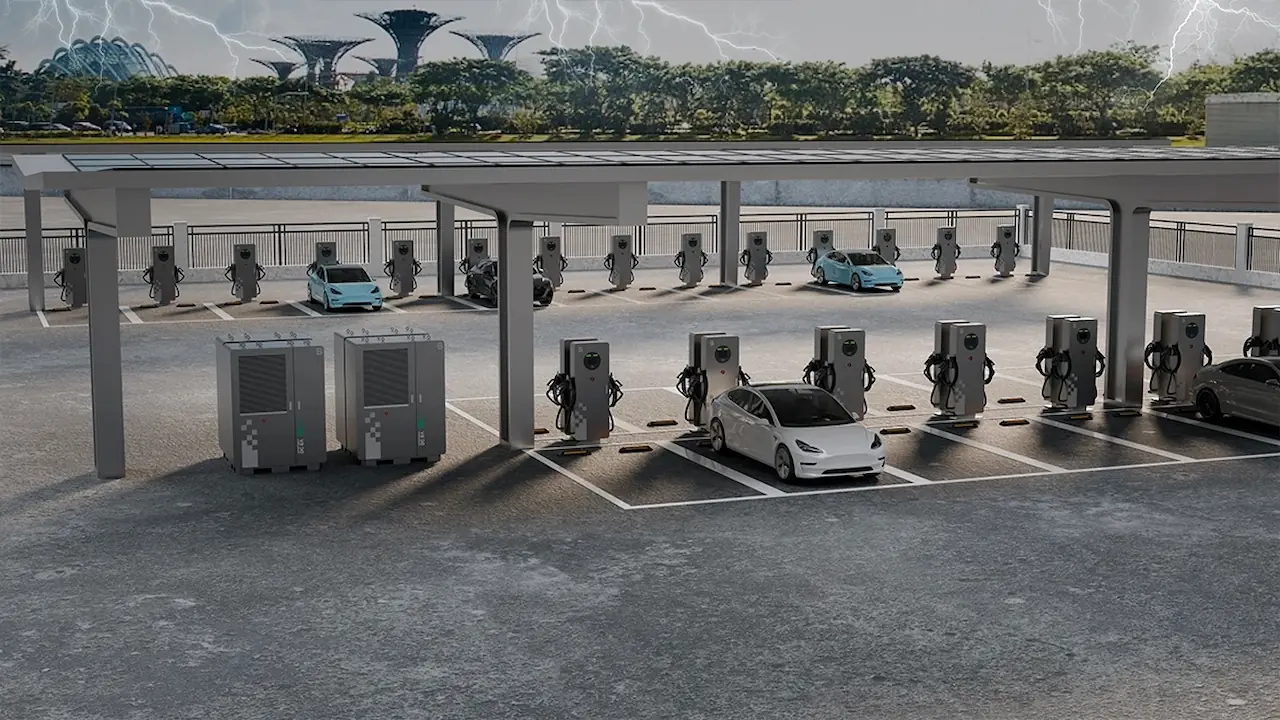
Risks of Insufficient IP & IK Protection
Insufficient IP & IK ratings may lead to a series of risks, compromising the safety, reliability, and service life of the equipment.
For example, if the IP degree of protection is inadequate, dust and particles may enter the device, causing short circuits, poor heat dissipation, or mechanical component wear. In damp or water-splashed environments, liquid ingress may damage electronic components or even pose an electric shock hazard.
If the IK rating is insufficient in environments prone to impacts, the enclosure may crack during accidental collisions, requiring more frequent repairs and part replacements—ultimately increasing the total cost of ownership for the equipment.
Cooperate with EVB Charger
If you’re considering investing in the EV charging business, IP & IK ratings are definitely not to be overlooked.
EVB Charger is an expert EV charging station manufacturer. Our AC, DC, and portable charging stations offer various IP & IK ratings to choose from, including commonly used standards such as IP54, IP55, IP65, IK08, and IK10. We can recommend the most suitable charging solution based on your needs to protect your investment. Contact us now for an optimal solution!
Common Misconceptions That Need to Avoid
1. Choose a higher protection level is better
Many people believe that selecting higher IP & IK ratings is always preferable. In reality, higher protection levels typically entail increased material costs, design complexity, and manufacturing expenses, resulting in higher prices. For household or indoor use, opting for IP68 is clearly unnecessary.
2. Neglect the IK rating
Many people focus solely on ingress protection ratings while overlooking the importance of IK ratings. In numerous practical applications, equipment may face potential impacts. Without adequate impact resistance, devices may require frequent replacement.
References
- [1] IP code. Available at: https://en.wikipedia.org/wiki/IP_code (Accessed: 14 May 2025)
- [2] EN 62262. Available at: https://en.wikipedia.org/wiki/EN_62262 (Accessed: 14 May 2025)

